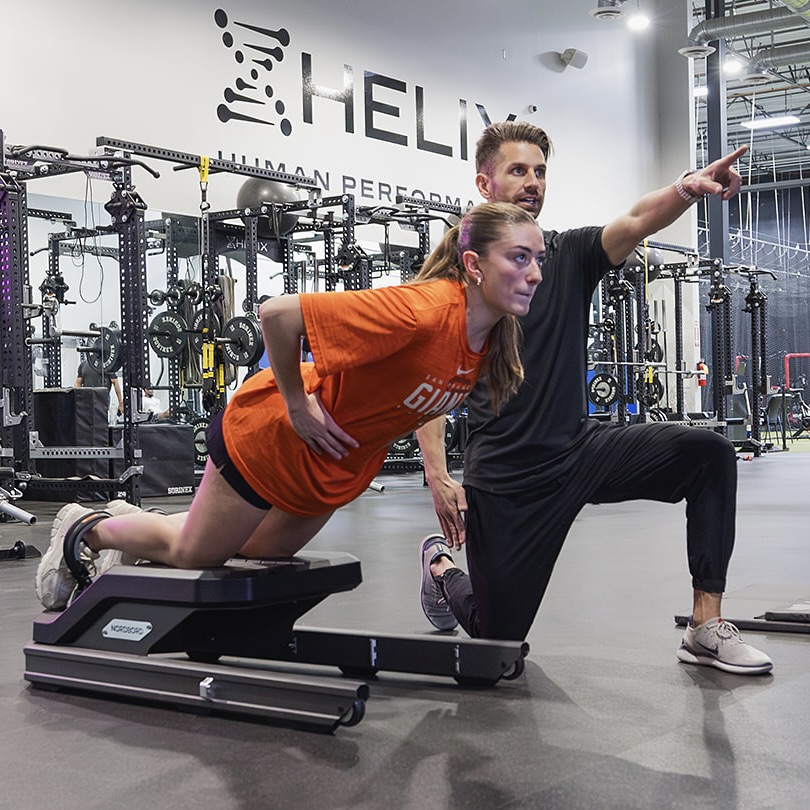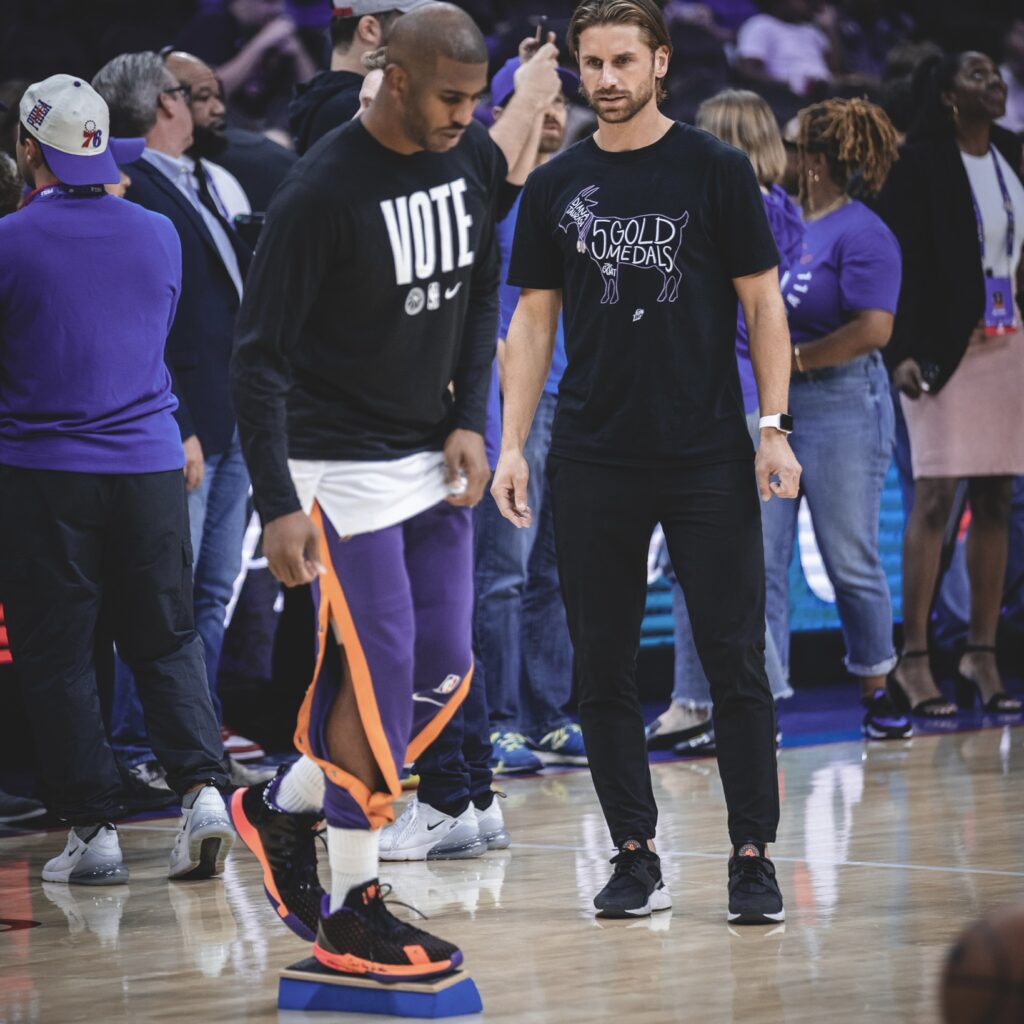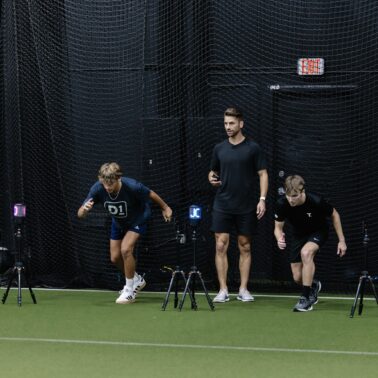Approximate Read Time: 18 minutes
“Models aren’t about being right — they’re about being consistent. In sports rehab, the 3P Model brings clarity to chaos.”
What You will learn
- Principles provide the foundation for consistent decision-making in rehab.
- Process turns theory into action through experimentation and exposure.
- Plans adapt to individual, task, and environmental constraints.
- Amplify desirable adaptations and dampen undesirable ones.
- The 3P Model bridges performance science and real-world rehab.
In sports rehab, every decision matters. A single choice — the way you load a squat, the volume you prescribe in a training week, the timing of an exposure drill — can influence performance outcomes, injury risk, and career longevity.
The problem is, sport is chaotic. Humans are unpredictable. Environments change in an instant. And when the game is moving fast — whether it’s the final week of playoffs or a player’s rehab window before a contract year — the complexity can be overwhelming.
The 3P Model — Principles, Process, and Plans — was my answer to that chaos. It’s not a magic formula. It’s a working framework. One that strips away noise, builds decision-making consistency, and keeps you focused on what truly matters: helping an athlete return not just to sport, but to their sport, their role, and their peak.
The problem is, sport is chaotic. Humans are unpredictable. Environments change in an instant. And when the game is moving fast — whether it’s the final week of playoffs or a player’s rehab window before a contract year — the complexity can be overwhelming.
The 3P Model — Principles, Process, and Plans — was my answer to that chaos. It’s not a magic formula. It’s a working framework. One that strips away noise, builds decision-making consistency, and keeps you focused on what truly matters: helping an athlete return not just to sport, but to their sport, their role, and their peak.
Why the 3P Model is the Sports Rehab Framework You Need
When I first built the 3P Model, it was a way to organize my own thinking. Over the years, through professional soccer, basketball, and high-performance environments, it became more than that. It turned into a filter for every decision I make as a performance therapist.
The influence of Bill Hartman’s Unified Health & Performance Continuum is there — a wider view that connects rehab, performance, and health into a single continuum. But I stick with 3P for its simplicity. I’ve found that in complex systems, simple language has staying power.
“A sports rehab framework should guide decisions under pressure, making performance outcomes more consistent and repeatable.”
And in 2025, we need simplicity. Sports medicine and performance science have never had more data — GPS metrics, force plate profiles, muscle oxygenation, DEXA scans — but more data doesn’t always mean better decisions. The 3P Model takes that flood of information and organizes it into a structure where decisions are not only evidence-informed, but athlete-specific and context-aware.
Think of it as a compass in a storm. It doesn’t tell you exactly where the shore is, but it keeps you from sailing blind.
Principles – The Foundation of Performance Therapy
Principles are the bedrock. They are the non-negotiables you stand on, the beliefs that shape your approach, and the truths you return to when the situation gets messy. In the 3P Model, they act like the blueprint of a building — if the foundation is crooked, every floor you add will tilt with it.
Over the years, I’ve refined these into ten guiding principles. They cover everything from the importance of coordinated movement to the reminder that consistency is king.

One of my favorites — and the first principle for a reason — is Coordinate Movement. Movement is the foundation of athleticism, and it has to be trained across multiple planes, volumes, and intensities. You can’t just hammer sagittal plane lifts and expect an athlete to handle the demands of cutting in a MLS match or reacting to an off-speed pitch. You have to understand the sensory and mechanical components of movement — posture, load distribution, pressure management — and teach athletes to move in ways that support both performance and resilience.
Another key principle, Force Management, is a nod to Newton. F = ma isn’t just physics, it’s the reality of sport. Whether it’s decelerating from a sprint or absorbing contact, athletes have to manage force production and absorption under chaotic conditions. In rehab, that means building eccentric strength as deliberately as concentric. It means knowing when to bias velocity, when to load heavy, and how each choice affects the athlete’s capacity to handle the next spike in workload.
And then there’s Fitness — a term I use in its broadest sense. Fitness isn’t just conditioning; it’s the suitability to fulfill a role. That role might be sprinting the wing for 90 minutes, playing back-to-back games in the NBA, or enduring a grueling rehab block without breaking down. For us, it means understanding the energy system demands of the sport, building general physiological qualities first, and then layering in specificity.
“Guiding principles in sports rehab anchor every decision, from movement training to fitness programming, ensuring a consistent path toward performance and recovery goals.”
Some principles are reminders of the human side of rehab. Treat the Person, Not the Diagnosis keeps me focused on the fact that an ankle injury isn’t an ankle in isolation — it’s a constraint on a whole system. That system still needs stimulus, still needs to train, and still has untapped capacity. And Consistency is King? It’s simple: small wins, stacked daily, are how athletes rebuild.
Principles aren’t static. They evolve as you evolve. But they give you a consistent foundation from which every decision flows.
Process: Turning Rehab Principles into Action
If principles are the “why,” process is the “how.” It’s the part of the model that moves you from theory to execution. In the 3P framework, Process rests on two core ideas: Experimentation and Exposure.
Experimentation starts with humility. In rehab, we can’t predict with absolute certainty how a given intervention will land. We can make educated decisions based on experience, evidence, and context, but there’s always uncertainty. That’s why every intervention should be a “safe-to-fail” experiment.
Maybe the manual therapy technique I’ve used 100 times doesn’t hit the same with this athlete. Maybe the trap bar deadlift variation I programmed reveals a movement compensation I didn’t anticipate. The key is to test, observe, and adjust — quickly. That’s where test–retest becomes non-negotiable. If I can’t see a measurable, relevant change after an intervention, it’s not the right fit for that athlete at that moment.
“An effective rehab process bridges evidence and execution, using test–retest, experimentation, and gradual exposure to create measurable athlete progress.”
Exposure is about progression. Jim Collins wrote, “Slow when you can, fast when you must.” That’s exactly how I think about progressing an athlete’s load, speed, or complexity. In preseason or early rehab, time is on your side — progress gradually, layer adaptations, and build resilience. In a playoff run or when a return-to-play window is tight, you may need to push the pace. But fast adaptations come with trade-offs, and you need to know which compromises you’re making.
The Process is what keeps you from guessing. It’s what turns the art of coaching into something measurable, adaptable, and repeatable.
Plans: Adapting Rehab Strategies to Athlete Needs
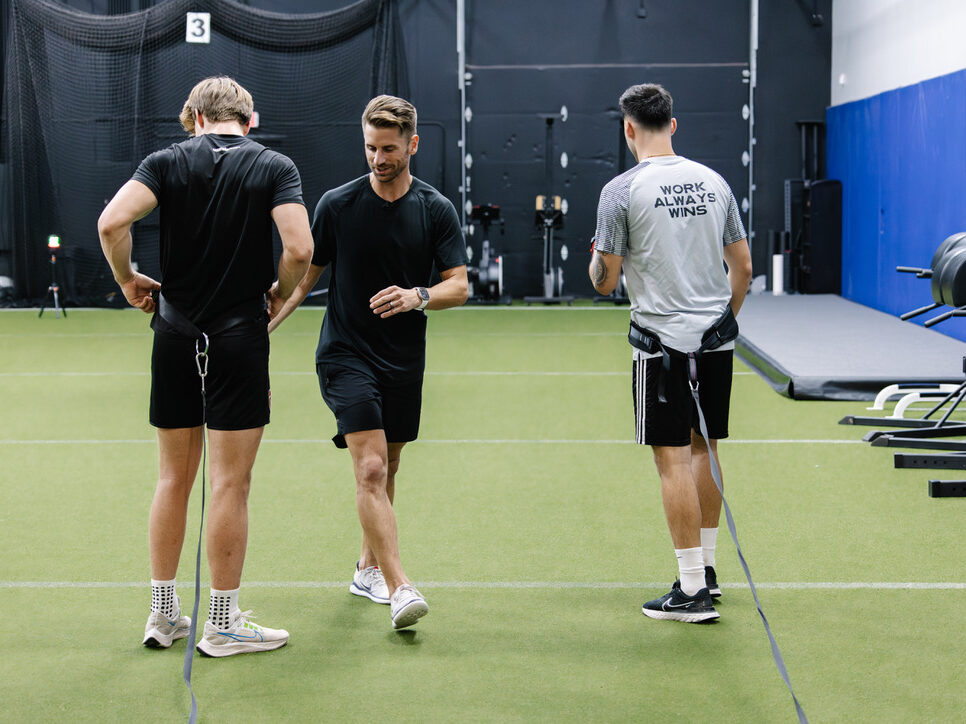
Plans are where the rubber meets the road. They’re the tactical execution of your principles and process, shaped by the unique constraints of the athlete, the sport, and the environment.
I break constraints into three broad categories: individual, task, and environmental. Individual constraints might be a player’s surgical history, their psychological profile, or their physical capacities. Task constraints come from the demands of their sport or position. Environmental constraints are everything from the playing surface to the travel schedule.
Plans are also time-bound by the athlete’s past, present, and future context. A veteran with multiple joint surgeries might not tolerate the same loading strategies as a rookie. An athlete with a contract negotiation looming might have different risk–reward thresholds for training or competition.
“Plans in a sports rehab framework adapt to each athlete’s constraints, balancing performance gains with injury risk reduction.”
One of the most useful concepts in planning is what I call Amplify Desirables, Dampen Undesirables. Every intervention you choose has downstream effects — some beneficial, some not. Your job is to tilt the balance. For one NBA player I worked with, chasing maximal strength and hypertrophy would have come at the cost of joint range and movement quality — both critical given his injury history. So we focused on improving movement, maintaining key athletic qualities, and monitoring muscle mass, avoiding the undesirable adaptations that could lead to breakdown.
In practice, this isn’t a once-a-month review. It’s an every-session habit. Did a certain activation drill improve squat mechanics? Amplify it. Did a lift provoke symptoms or degrade movement? Dampen it or swap it. The nervous system adapts quickly — your plans should, too.
How the 3P Model Supports Return-to-Play Decisions
The 3P Model is not meant to live in isolation from skill, tactics, or broader performance preparation. Paul Glazier’s Unified Theory of Sports Performance highlights that true preparation integrates technical, tactical, and physical components in context.
“The 3P Model connects technical, tactical, and physical preparation, making rehab an integrated part of an athlete’s complete performance plan.”
In my own practice, the 3P framework naturally lends itself to this integrative approach. Principles give you the foundation, Process keeps you adaptable, and Plans make sure your interventions are relevant to the athlete’s actual performance environment. That’s how rehab becomes more than just “getting back to playing” — it becomes building a better version of the athlete than before they got hurt.
Putting the 3P Model to Work
Whether you’re screening athletes in preseason, managing in-season workloads, or walking an ACL patient through the return-to-play continuum, the 3P Model gives you a roadmap. You’ll still have to make judgment calls. You’ll still face uncertainty. But you won’t be operating without a framework.
“Applying a sports rehab framework like the 3P Model turns uncertainty into structured progress, from preseason readiness to return-to-play decisions.”
And in a profession where the stakes are measured in careers and championships, that framework can be the difference between doing good work and doing your best work.
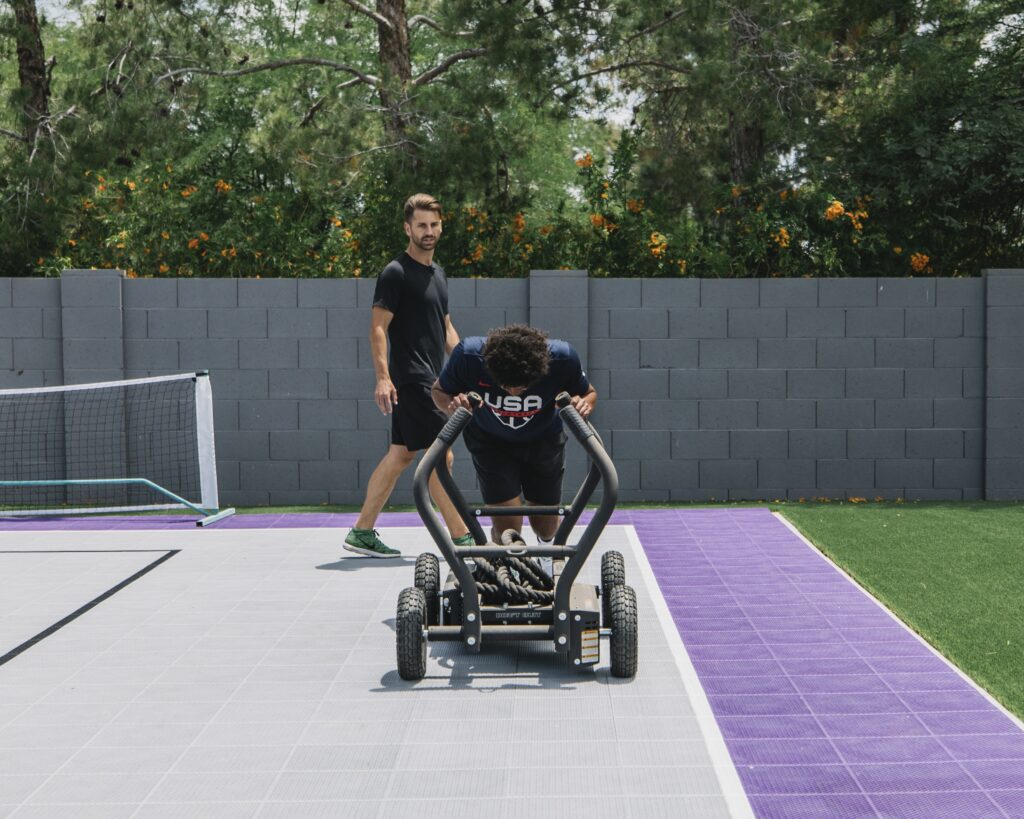
Free Download
Watch More Like This
Read More About This
Deeper Dives with these Podcast Episodes
References
Glazier PS. Towards a Grand Unified Theory of sports performance. Hum Mov Sci. 2017;56(Pt A):139-156. doi:10.1016/j.humov.2015.08.001.
Noakes TD. Fatigue is a brain-derived emotion that regulates the exercise behavior to ensure the protection of whole body homeostasis. Front Physiol. 2012;3:82. doi:10.3389/fphys.2012.00082.
Noakes TD. Time to move beyond a brainless exercise physiology: The evidence for complex regulation of human exercise performance. Appl Physiol Nutr Metab. 2011;36(1):23-35. doi:10.1139/H10-082.
Gabbett TJ. The training—injury prevention paradox: Should athletes be training smarter and harder? Br J Sports Med. 2016;50(5):273-280. doi:10.1136/bjsports-2015-095788.
Previc FH. A general theory concerning the prenatal origins of cerebral lateralization in humans. Psychol Rev.1991;98(3):299-334. doi:10.1037/0033-295X.98.3.299.
Torres-Tamayo N, García-Martínez D, Nalla S, et al. The torso integration hypothesis revisited in Homo sapiens: Contributions to the understanding of hominin body shape evolution. Am J Phys Anthropol. 2018;167(3):777-793. doi:10.1002/ajpa.23705.
